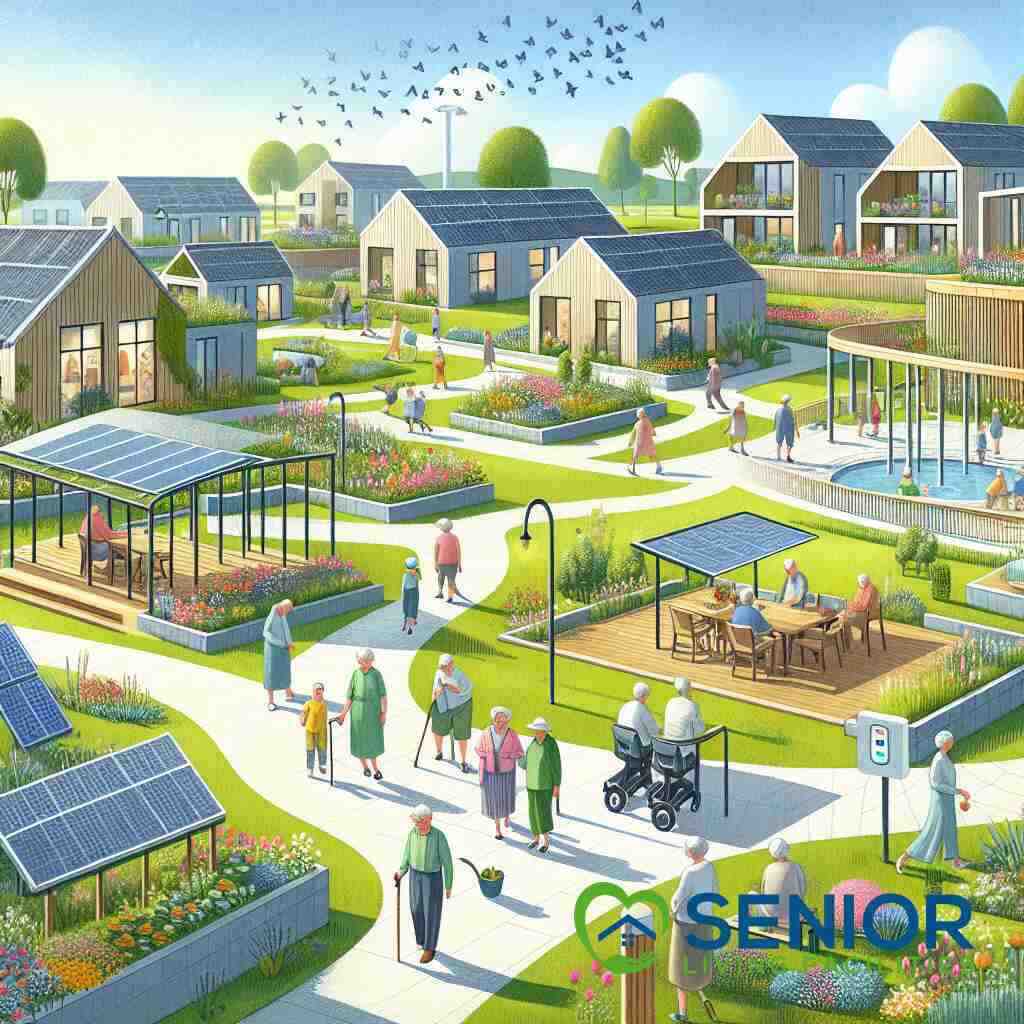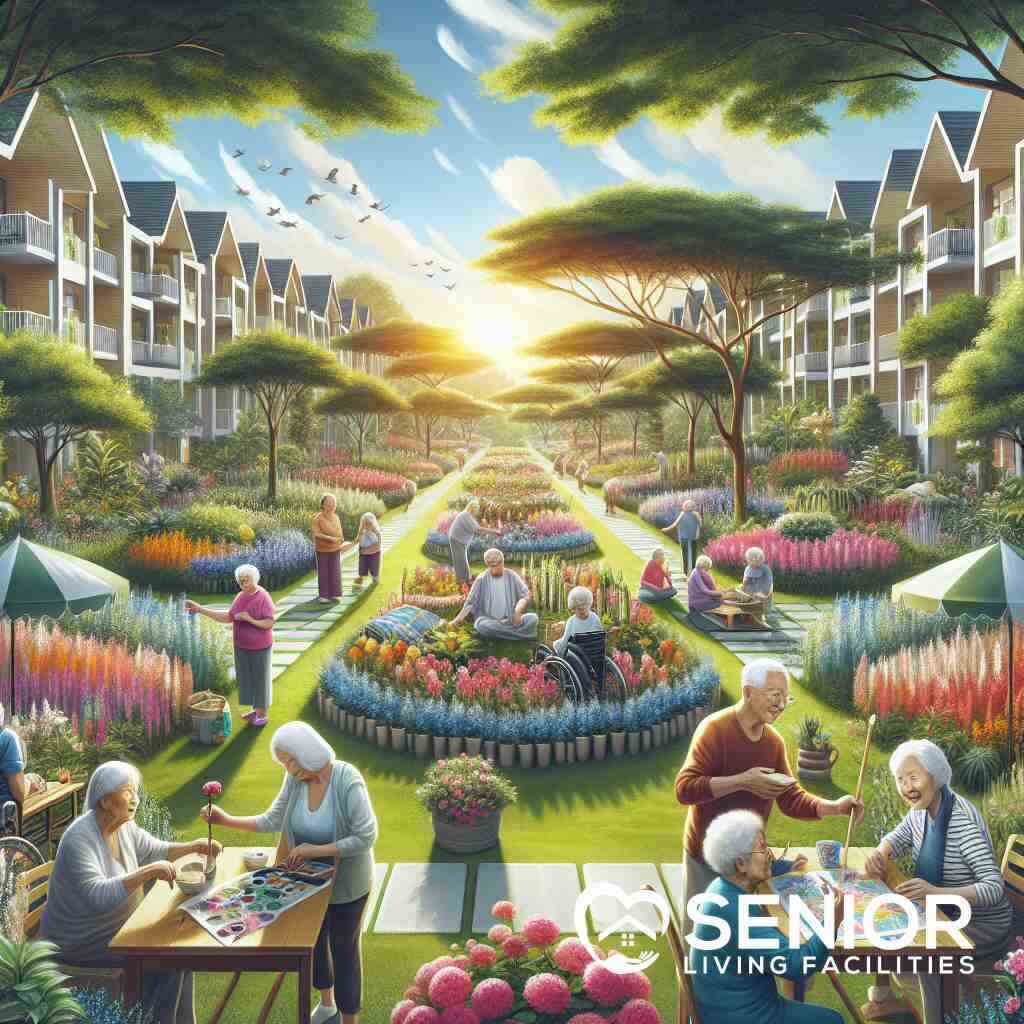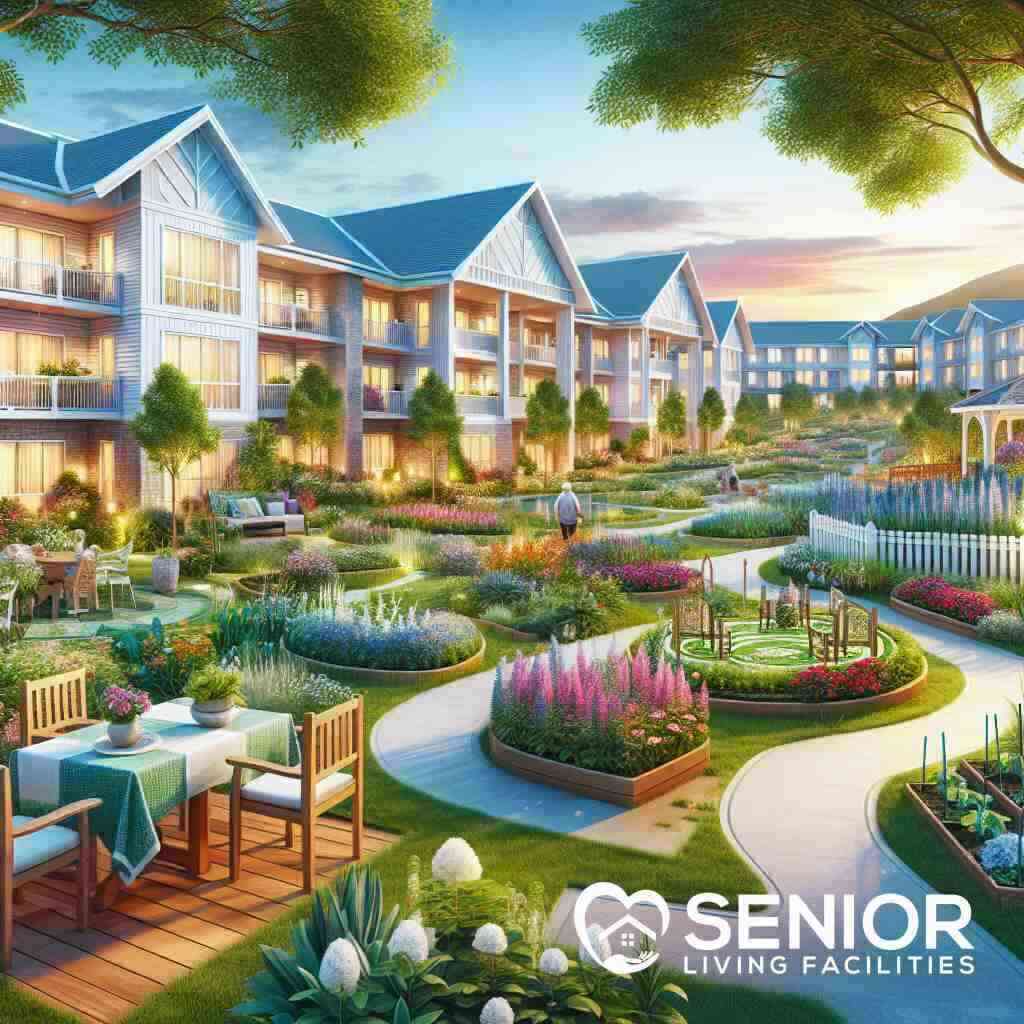
How to Compare Senior Living Facilities in Urban vs Rural?
October 22, 2024
Embarking on a Journey: The Decision-Making Compass
Understanding Your Senior Living Needs
Recognizing your essential senior living needs is the foundational step in this endeavor. Whether seeking independent senior living communities for autonomous lifestyles or requiring assisted care, a clear understanding of personal and medical needs informs your choices. Consider factors like daily assistance and healthcare requirements, which heavily influence the type of community suitable for you. Navigating Senior Living Options Near Me for 2024 Assess your level of care dependency, lifestyle desires, and the availability of necessary support systems in different settings. Consult with professionals to identify ideal senior living facilities that match your specific requirements, ensuring a tailored and fulfilling experience.
Weighing Urban vs Rural Pros and Cons
Comparing urban and rural senior living environments reveals distinct advantages and challenges unique to each setting. Urban areas typically offer proximity to medical facilities, diverse social engagements, and an array of amenities. Conversely, rural areas provide a serene, natural setting with the potential for close-knit community bonds. Weigh these pros and cons considering personal priorities such as accessibility to healthcare or preference for tranquility. Reflect on the hustle and bustle of city life versus the peaceful embrace of the countryside to evaluate which aligns more closely with your lifestyle aspirations and practical needs. The Evolution of HealthCare in Senior Living
Exploring Personal Preferences in Community Settings
Understanding your senior living needs extends beyond logistical and medical considerations. It involves exploring personal preferences regarding community settings. Consider whether you thrive in a bustling environment filled with vibrant activities and numerous interactions. Alternatively, a quiet, nature-inspired lifestyle might be preferable, offering relaxation and peace. Assess your social engagement desires and the kind of interpersonal relationships you hope to foster in your community. Examine housing options for seniors that align with these preferences, ensuring a setting where you feel most comfortable and fulfilled. This exploration enables a comprehensive understanding and comparison of potential living facilities.
Urban Senior Living: The Lively Pulse of City Life
Accessibility and Proximity to Healthcare Services
Urban senior communities boast unparalleled advantages in terms of healthcare accessibility. Proximity to hospitals and specialized medical facilities ensures that seniors receive prompt and comprehensive healthcare. The availability of cutting-edge medical technology and a wide array of healthcare professionals further enhances senior living healthcare access. Urban areas also host numerous clinics and therapy centers, providing convenient options for regular check-ups and specialized treatments. This accessibility often translates to quicker emergency response times and thorough medical care, offering peace of mind to residents and their families.
Diverse Social Opportunities and Engagements
Living in bustling urban settings opens the door to vibrant social opportunities and interactions. Senior living options near you in urban areas include various cultural events, recreational activities, and community gatherings. These engagements are crucial for mental stimulation and emotional well-being, facilitating friendships and a sense of belonging. Resources such as community centers, volunteering opportunities, and senior clubs cater to diverse interests, fostering a rich social life. This environment often motivates seniors to stay active and socially connected, significantly contributing to overall quality of life.
Amenities and Infrastructure in Urban Areas
An abundance of amenities and well-developed infrastructure characterize urban senior living. Seniors have access to diverse culinary experiences, recreational facilities, shopping centers, and entertainment options. The public transportation system in cities is typically extensive, enabling easy travel across town for leisure or medicinal purposes. Amenities such as swimming pools, fitness centers, and organized excursions give seniors ample opportunities for leisure and fitness. By exploring senior living amenities available in urban settings, residents can enjoy a diverse and fulfilling lifestyle while having essential services at their fingertips.
Rural Senior Living: Embracing the Serenity of Countryside
Benefits of a Peaceful and Tranquil Environment
Rural senior living offers a striking contrast to the bustling environment of urban areas. The primary appeal lies in the tranquility and peace that countryside settings provide. This serene environment significantly reduces stress and promotes a calm lifestyle conducive to relaxation and mental well-being. Surrounded by nature, these communities allow seniors to enjoy the allure of open spaces and scenic landscapes. Such an atmosphere is not only therapeutic but also enhances the overall quality of life by fostering a sense of peace and satisfaction.
Seniors residing in rural communities often experience less noise pollution and a slower-paced lifestyle. The absence of the constant hustle and bustle found in urban areas contributes to a more relaxed and leisurely life. This tranquility is ideal for those seeking to escape the rapidity of city life and embrace a more serene and reflective living environment. Additionally, rural areas often have cleaner air, contributing to improved health and well-being.
Close-Knit Community Interactions and Bonding
One of the defining characteristics of rural senior living is the opportunity for close-knit community interactions and bonding. Smaller community sizes often lead to stronger, more personal relationships among residents. This sense of camaraderie is invaluable, providing emotional support and fostering a strong sense of belonging. Seniors can build lasting friendships and actively participate in community-driven activities that enrich their daily lives.
Personal connections and shared experiences characterize social engagement in rural senior living in Georgia. Seniors have the chance to partake in local gatherings, events, and communal activities that strengthen these bonds. This intimate community setting is conducive to forming deep relationships, as residents often come together for shared meals, hobby groups, and cultural events. This beneficial social structure significantly enhances mental health and emotional fulfillment. The Best Senior Living Facilities in Warm Climates
Nature-Inspired Lifestyle Choices
Rural senior communities are well-suited for individuals who cherish nature-inspired lifestyle choices. These settings offer abundant opportunities to engage with the natural world, from hiking and gardening to simply enjoying the picturesque surroundings. The connection to nature is not only rejuvenating but also encourages an active lifestyle, promoting physical health and vitality among seniors.
The rural lifestyle offers a variety of recreational activities that align with personal preferences and health needs. Best Practices for Senior Living Facility Selection Seniors can tailor their activities based on their interests, whether it’s maintaining a garden, engaging in outdoor fitness routines, or participating in community-led nature excursions. This freedom to pursue nature-inspired interests is a significant aspect of senior living lifestyle choices, allowing individuals to fully embrace their golden years in an environment that nurtures both body and soul. By integrating daily interactions with nature, residents can achieve a harmonious balance, enriching their sense of peace and fulfillment.
The Economic Equation: Cost Analysis of Senior Living
Breaking Down Living Expenses in Urban vs Rural Settings
Living expenses in senior communities vary significantly between urban and rural settings, impacted by location and available amenities. Urban senior communities often come with a higher price tag due to elevated property values and extensive facilities. In contrast, rural senior living environments might offer more affordability, with generally lower costs for housing and everyday services. These differences highlight the need to carefully evaluate how location affects costs while considering the economic landscape of each setting. Understanding these nuances aids in discerning the best financial fit for each individual’s unique situation.
Urban centers tend to incur higher costs for rental housing, dining, and healthcare services compared to their rural counterparts. Navigating Complex Senior Living Decisions for 2024, The vast infrastructure in urban areas can inflate expenses related to maintenance and amenities. On the other hand, rural communities benefit from lower land costs and operational expenses, which can result in reduced fees for residents. Prospective residents should analyze these expense disparities to align their financial capacities with the economic demands of the chosen senior living environment.
Assessing Affordability and Budget Considerations
Affordability remains a crucial factor in choosing between urban and rural senior living facilities. Seniors and their families must weigh the benefits of city amenities against the backdrop of higher costs. Rural facilities might appeal as a cost-effective alternative but may lack certain conveniences found in urban settings. Assessing affordability involves not just current income but also considering long-term financial stability, ensuring consistent funding for a comfortable lifestyle.
Cost assessment should include a detailed analysis of available financial assistance, senior benefits, and insurance coverage. Urban settings may require an expansive budget due to higher living costs, while affordability in rural communities could offer more flexibility. Create a financial plan that encompasses all potential expenses, enabling a realistic comparison of life in these distinct environments and assisting in making informed decisions about long-term living arrangements. Understanding Senior Living Facilities for Veterans Day
Analyzing Rental Housing and Senior Apartment Rentals
Rental housing options are plentiful in both urban and rural senior living communities, but they come with differing economic implications. In urban areas, rental prices can be steep, as demand for senior apartments is high, leading to competition and elevated rates. Rural settings, by contrast, typically feature more affordable rental options, reflecting lower demand and cost less heightened by market pressures.
Choosing the right housing option is pivotal, and seniors need to evaluate the financial commitments associated with various rental agreements. Urban rentals may offer luxurious amenities that reflect in the pricing, while rural rentals can be more economical with fewer frills. Understanding these factors, referenced in resources like rental housing in senior communities, assists seniors in finding appropriate housing that fits within their budgetary framework while accommodating personal preferences. This strategic approach to finance and housing ensures a harmonious balance between comfort and affordability.
Healthcare Access: Navigating the Medical Spectrum
Analyzing Proximity to Specialized Medical Facilities
The proximity to specialized medical facilities is pivotal when comparing urban and rural senior living options. Urban senior communities often have the upper hand, with close access to hospitals, specialty clinics, and a broader range of healthcare services. This access is vital for seniors with ongoing medical needs, ensuring timely interventions and specialized care. Urban locations frequently boast advanced healthcare infrastructure, including emergency services and cutting-edge medical technology. As a result, seniors and their families can take comfort in knowing that high-quality medical care is readily available in city environments.
In rural senior communities, the distance to specialized healthcare services may present a challenge. Although the pace of rural living offers many benefits, seniors may need to travel further to receive specialized care. Families need to consider the frequency and type of medical appointments required when choosing a senior living facility. Strategies like transportation plans or choosing facilities close to regional medical centers can mitigate these challenges, ensuring that residents have access to the necessary care. Virginia senior living services exemplify efforts to provide comprehensive care, highlighting the importance of healthcare accessibility in both urban and rural settings.
Comprehensive Healthcare in Urban Centers
Urban centers provide a comprehensive range of healthcare services that cater to a variety of senior care needs. The presence of numerous clinics, healthcare facilities, and medical professionals makes urban locations attractive for seniors requiring consistent medical oversight. This environment supports extensive healthcare networks, offering everything from routine care to sophisticated treatments. Seniors benefit from shorter wait times and access to a wide array of medical specialties, contributing to an overall sense of security. Understanding Senior Living Facilities for Veterans Day
In urban senior living, the emphasis on comprehensive healthcare services ensures that seniors’ medical, dental, and mental health needs are met effectively. Access to rehabilitation services, therapy centers, and advanced care options further bolsters the appeal of city living for those with complex health conditions. Another advantage includes the availability of in-home healthcare services for seniors who prefer aging in place. How to Identify Nutritious Dining in Senior Communities? Proximity to diverse medical professionals and facilities ensures urban senior communities remain viable options for those prioritizing healthcare access.
Challenges of Access to Care in Rural Regions
Access to care in rural senior communities presents unique challenges that potential residents must consider. Rural areas often experience shortages of healthcare professionals, making specialized services harder to find. In addition, limited transportation options may impede seniors’ ability to attend appointments, leading to delays in receiving care. These factors underscore the need for careful planning when evaluating rural retirement options in Mississippi and similar locales.
Despite these challenges, rural senior living facilities are increasingly enhancing their healthcare offerings. Many communities form partnerships with local clinics and healthcare networks to provide visiting specialists and mobile health services. This approach helps bridge the gap in healthcare access and offers seniors much-needed medical resources. Additionally, telehealth services have become a boon for rural areas, offering virtual consultations with specialists without the need for extensive travel. By addressing these healthcare access challenges, rural senior communities continue to evolve, providing residents with the care necessary to enjoy a fulfilling lifestyle.
Transportation and Mobility: Navigating the Terrain
Urban Transportation Networks and Accessibility
Navigating the dynamic environment of urban senior living near New York hinges significantly on efficient transportation systems. Urban centers offer seniors a robust network of public transit options, from buses and subways to accessible taxis, ensuring ease of travel for daily errands and healthcare appointments. This accessibility serves to enhance autonomy for those residing in urban senior communities, making day-to-day activities both manageable and enjoyable. Ultimate Review of Independent Living in Texas
The extensive infrastructure of urban areas allows seniors to participate actively in the vibrant city life. Public transport is typically designed with accessibility features, such as priority seating and low-floor buses, catering to the mobility needs of seniors. Furthermore, urban transportation often includes door-to-door services, like paratransit, which are crucial for seniors with specific mobility challenges. By leveraging these transportation networks, seniors can maintain independence and enrich their urban senior living experience.
Rural Transportation Solutions and Challenges
Transportation in rural senior living settings presents both creative solutions and unique challenges. The expansive landscape and lower population density of rural areas often result in limited public transit options. This can pose significant challenges for seniors who require regular travel to healthcare facilities or social engagements. However, many rural senior communities address these challenges by offering shuttle services and partnering with local organizations to provide transportation for residents.
Innovative solutions, such as community ride-sharing programs or volunteer-driven transportation services, are increasingly adopted in rural areas to support senior mobility. Despite these efforts, the limited availability of public transport remains a hurdle, necessitating a greater reliance on private vehicles and organized group transport. Strategic planning is essential for rural senior communities to ensure that residents have access to necessary provisions and social activities, fostering a connected and fulfilling lifestyle. Spring 2024 Guide to Independent Living in Florida
Navigating Assisted Living Plans with Ease
Transitioning into assisted living involves understanding and navigating the mobility options available in different geographical settings. Assisted living plans often incorporate comprehensive transportation services designed to cater to the varied needs of residents. Whether residing in urban or rural environments, these plans focus on ensuring safe and reliable transport to medical appointments, recreational outings, and social activities.
Facilities located in urban areas might offer more diverse transportation solutions due to the proximity of amenities, while those in rural settings may emphasize scheduled trips to external locations. Evaluating the transportation offerings as part of assisted living facilities in Alabama and beyond allows families to make informed decisions that align with their mobility requirements. By choosing plans that ease the transportation process, seniors can enjoy a seamless transition into assisted living, experiencing minimal disruption to their daily routines and maximizing their quality of life.
Holistic Well-Being: Quality of Life Considerations
Evaluating Community Engagement in Different Settings
Community engagement plays a pivotal role in determining the quality of life in senior living facilities. Urban and rural settings offer contrasting opportunities and challenges when it comes to fostering community connections. In urban environments, seniors are surrounded by a vibrant array of cultural and educational activities that encourage regular engagement. The diversity of activities allows residents to find their niche and participate in community-focused events, significantly enhancing their well-being. In contrast, rural settings often rely on tight-knit community bonds, where personalized opportunities for interaction provide deep, fulfilling relationships. Ultimate Guide: Aging in Place vs Senior Communities Understanding how different environments support community engagement is crucial when you compare urban and rural senior communities, helping seniors align their preferences with available options.
Seniors’ interactions in these communities often profoundly shape their emotional and mental health. Urban settings may provide myriad opportunities but can sometimes overwhelm those seeking quieter, slower-paced interactions. Conversely, rural areas offer an invitingly intimate environment conducive to forging lasting connections. Assessing personal engagement styles and preferences in these settings is essential for optimizing the quality of life in senior living communities. Tailored community programs can often provide the necessary engagement avenues, helping seniors thrive in whichever setting they choose.
Lifestyle Choices and Social Opportunities
Lifestyle choices are a defining factor in the enjoyment and satisfaction seniors experience in their chosen living environments. Urban senior living communities offer an unparalleled variety of social opportunities, from theater outings and museum visits to sporting events and gourmet dining experiences. These options keep residents actively engaged and socially enriched, promoting a lifestyle buzzing with activity. On the flip side, rural senior communities offer a slower pace, focused on nature-inspired activities and communal living experiences, which can be perfect for those who thrive in simplicity and solitude while forming bonds grounded in shared, rustic experiences.
Social opportunities for seniors are abundant and diverse, profoundly influencing their social lives. Urban settings offer structured events and gatherings that leverage the surrounding cityscape, while rural environments might promote agricultural activities, nature hikes, or local fairs as core social events. The key is to explore these different social opportunities in alignment with personal interests and health goals. Tailoring these lifestyle choices to ensure they match personal aspirations leads to fulfilling experiences within their community.
Ensuring Peace of Mind: Urban and Rural Perspectives
Peace of mind is a fundamental consideration in senior living, stemming from different aspects based on whether one chooses an urban or rural setting. Urban senior living can instill confidence with accessible healthcare services, comprehensive in-house facilities, and robust security measures. The comfort derived from having essential services and amenities nearby provides reassurance to residents and families alike. Meanwhile, rural senior living offers peace of mind through its serene, peaceful environment, which naturally promotes relaxation and stress relief.
The tranquility found in rural settings contrasts with the bustling but secure urban communities, offering seniors choice in determining what genuinely contributes to their peace of mind. For some, the availability of immediate medical care and social services in cities outweighs the tranquility of rural life. For others, access to nature, open spaces, and slower living in the countryside is the cornerstone of their peace. Each environment has unique elements that contribute to mental and emotional well-being, and understanding these can greatly assist seniors in choosing the setting that best caters to their desire for peace and comfort. This understanding forms a critical component of making informed decisions when you choose senior housing with ease.
The Journey’s End: Choosing Your Perfect Haven
Summarizing Key Takeaways for Decision-Makers
Decision-makers embarking on the journey to find the perfect senior living facility must keep several pivotal factors in mind. Understanding the distinct differences between urban and rural senior living options is crucial in aligning them with personal needs and preferences. Urban areas boast accessibility to a plethora of amenities, healthcare services, and social opportunities that cater to a lively and interactive lifestyle. Conversely, rural settings provide tranquility, close-knit community bonds, and a deep connection to nature, appealing to those seeking peace and serenity.
Budget considerations weigh heavily in the decision-making process, as urban living often incurs higher expenses due to increased property values and lavish amenities. Rural communities generally offer more economical options but may lack some conveniences. Carefully evaluating these economic consequences is essential in portraying a complete picture of potential living environments. These comprehensive insights assist in apple-to-apple comparisons, enabling seniors and families to make well-informed decisions and ultimately choose senior housing with ease.
Tailoring Choices to Individual Needs and Preferences
No two seniors have the same requirements, which makes tailoring senior living choices to individual needs and preferences a critical step. Engaging with resources that help identify your specific senior living aspirations, whether it be independent or assisted living arrangements, is important for personal fulfillment. Some might prioritize healthcare accessibility, while others search for a vibrant social life or tranquility amidst lush landscapes.
Evaluating both short-term and long-term needs ensures that the selected living environment remains conducive to happiness and wellness throughout the senior years. Veterans Day: Honoring Seniors Who Served Factors such as mobility and health status, alongside lifestyle desires, guide the process of finding an ideal community setting. Leveraging resources to identify ideal senior living facilities aligns these needs with available options and opens the gateway to a richly rewarding senior living experience.
Connecting with Communities for Seniors 55+
Seniors 55+ can cultivate a meaningful and enriched lifestyle by connecting with communities that cater to their stage of life. Finding a community that resonates can foster deep social connections and mutual support, significantly enhancing the quality of life. Both urban and rural communities strive to build environments that promote engagement, whether through cultural events, recreational activities, or serene gatherings in nature-inspired settings.
For those exploring senior living options, thriving within these communities means immersing oneself in opportunities that align with personal aspirations and needs. Resources providing insights into vibrant senior communities allow individuals to gauge engagement potential and ensure compatibility. Connecting with senior living options near you helps seniors become part of a community that resonates, thus ensuring a future filled with joy, purpose, and belonging. By selecting the right setting, seniors can fully embrace their golden years, surrounded by supportive peers and a community equipped to meet their every need.
Frequently Asked Questions
Question: How do senior living facilities help compare urban senior communities with rural senior living options?
Answer: Senior Living Facilities provide a comprehensive platform that allows individuals to compare the distinct offerings of urban senior communities with rural living environments. By offering detailed profiles of each senior living option, the platform helps users assess accessibility, amenities, social opportunities, and healthcare services available in both settings. Whether you are interested in the diverse amenities found in urban senior communities or the serene lifestyle of rural senior communities, our database ensures that you find suitable options tailored to your specific preferences and needs.
Question: What are the primary factors to consider when deciding on a senior living facility in urban vs rural settings?
Answer: When choosing a senior living facility, key factors to consider include healthcare access, cost, amenities, and quality of life. Urban settings typically offer greater accessibility to medical facilities and diverse social opportunities but at a higher cost. Rural settings often provide a more peaceful, nature-inspired lifestyle and lower costs. Senior Living Facilities helps users weigh these factors by providing detailed comparisons, ensuring that your decision aligns with personal priorities and budget considerations, whether in a vibrant city environment or a tranquil rural setting.
Question: How does the location of a senior living facility impact healthcare accessibility?
Answer: The location of a senior living facility is crucial for healthcare accessibility. Urban senior communities generally offer proximity to specialized medical services, clinics, and hospitals, ensuring swift access to comprehensive care. In contrast, rural senior living environments might require longer travel distances to reach healthcare facilities. Exploring How Geographic Location Affects Senior Living Senior Living Facilities highlights these differences, helping users select a location that meets their healthcare needs. By understanding these geographic factors, families can make informed decisions that ensure seniors receive the necessary medical attention, enhancing peace of mind.
Question: Can Senior Living Facilities assist in identifying cost-effective senior living solutions in both urban and rural areas?
Answer: Absolutely. What is the Cost of Luxury Senior Living in Florida? Senior Living Facilities is dedicated to helping families find cost-effective senior living solutions that match their financial situation while meeting lifestyle preferences. By analyzing cost differences between urban and rural senior communities, the platform offers insights into rental housing costs, amenities, and long-term expenses. This thorough evaluation process ensures families can find an economical and comfortable senior living arrangement, whether they prefer the urban amenities or the tranquility of rural living options.
Question: How does community engagement differ in urban versus rural senior housing, and how does Senior Living Facilities showcase these aspects?
Answer: Community engagement is a vital aspect of senior living that varies significantly between urban and rural settings. Top 5 Senior Living Communities in California Urban senior communities provide a plethora of structured activities and social opportunities. At the same time, rural areas focus on close-knit community interactions and nature-inspired activities. Senior Living Facilities highlights these distinctions by providing detailed descriptions and reviews of community engagement opportunities available in each setting. This information allows users to choose a senior housing community that aligns with their social preferences and lifestyle goals, ensuring a fulfilling and connected living experience. Ultimate Guide to Assisted Living Benefits Near You




